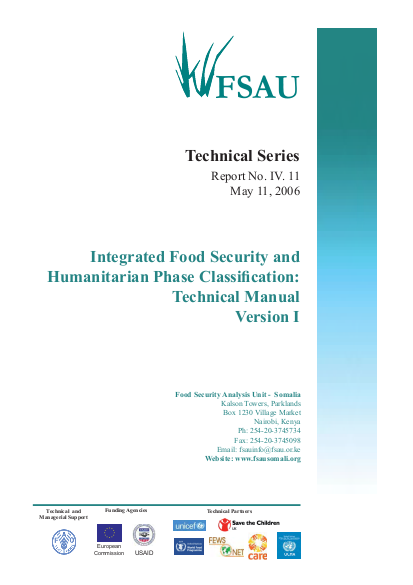
Since February 2004 the Food Security Analysis Unit for Somalia (FSAU1) has been using and progressively developing a tool to meet these challenges called the Integrated Food Security and Humanitarian Phase Classification (IPC2). Drawing from extensive literature on international humanitarian guidelines, aspects of existing classification systems, and in situ analysis of food security in Somalia, the IPC has consistently proven to improve analysis and enable more effective response.
The IPC summarizes Situation Analysis, a distinct, yet often overlooked (or assumed) stage of the food security analysis-response continuum. Situation Analysis is a foundational stage whereby fundamental aspects (severity, causes, magnitude, etc) of a situation are identified—aspects for which there is optimally broad-based consensus by key stakeholders including governments, UN and NGO agencies, donors, the media, and target communities.
The analytical logic of the IPC is that varying phases of food security and humanitarian situations are classified based on outcomes on lives and livelihoods. Outcomes are a function of both immediate hazard events along with underlying causes, and the specific vulnerabilities of livelihood systems (including both livelihood assets and livelihood strategies). The outcomes are referenced against internationally accepted standards, and their convergence substantiates a phase classification for any given area. Each phase is associated with a unique strategic response framework, while the outcome configuration for any given situation guides the development of the most appropriate responses within that framework. While the phase classification describes the current or imminent situation for a given area, early warning levels are a predictive tool to communicate the risk of a worsening phase. Risk is a function of the probability of a hazard event, exposure, and the specific vulnerabilities of livelihood systems.